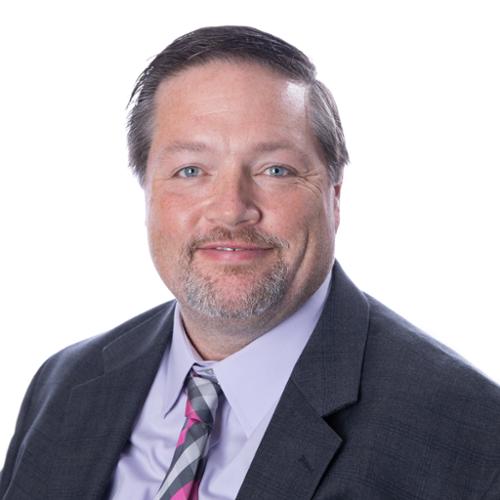The Primary Care Dilemma: Shortages Deepen Despite Record Medical School Enrollment
The Primary Care Dilemma: Shortages Deepen Despite Record Medical School Enrollment
Even as the number of U.S. medical graduates continues to grow, the primary care workforce remains critically undersupplied—particularly in rural and underserved communities. According to recent reports, over 90% of rural counties lack a sufficient number of primary care physicians, and only 9% of doctors nationwide choose to practice in rural areas.

The 2025 NRMP Match results further illustrate the problem: family medicine residency programs filled just 85% of available positions, marking a slight decline from the previous year. Meanwhile, federal data estimate that over 13,000 additional primary care providers are needed to eliminate current Health Professional Shortage Areas (HPSAs).
For physician recruiters, these figures underscore an urgent reality: solving the primary care crisis will require aggressive, creative, and highly tailored recruitment strategies—especially for rural hospitals, FQHCs, and community-based care systems.
Understanding the Primary Care Workforce Gap
Key Data Points:
-
Over 13,000 primary care physicians are needed to meet demand in HPSAs
-
More than 90% of rural counties do not have enough primary care doctors
-
Only 9% of U.S. physicians practice in rural settings
-
2025 Family Medicine Match Fill Rate: 85%
Despite federal and private efforts to expand medical school enrollment and add new residency slots, interest in primary care specialties is not keeping pace with national needs—particularly in underserved regions.
Why Primary Care Shortages Persist
Several interrelated factors contribute to the ongoing shortfall in primary care, including:
1. Lower Compensation Compared to Specialties
Family medicine, internal medicine, and pediatrics continue to offer significantly lower starting salaries than most surgical or subspecialty fields. For medical graduates carrying significant student debt, this can be a strong deterrent.
2. Perceived Burnout and Administrative Burden
Primary care providers often face high patient loads, increasing administrative requirements, and limited work-life balance—especially in rural or resource-limited environments.
3. Urban and Suburban Job Concentration
Most new physicians prefer to practice in metropolitan areas with access to professional networks, spousal employment opportunities, and lifestyle amenities. This leaves rural areas perennially understaffed.
4. Cultural and Educational Gaps
Many residency programs and medical schools remain urban-centric. Students from rural backgrounds—who are more likely to return to underserved communities—remain underrepresented in medical training.
What the 2025 Match Tells Us About Primary Care
The 2025 NRMP Match saw record participation overall, yet the family medicine fill rate dropped slightly to 85%, continuing a worrying trend. While U.S. MD and DO seniors still fill most primary care slots, unfilled positions are increasingly being filled by international medical graduates (IMGs) or going unfilled altogether.
This indicates that primary care is struggling to attract top-choice candidates, even as more residency slots are being created. Unless interest increases, simply expanding capacity will not resolve the issue.
Implications for Physician Recruiters
1. Competitive Recruiting Will Intensify for Primary Care Talent
Rural hospitals, community health centers, and federally qualified health centers (FQHCs) must continue to compete aggressively for a limited number of candidates who are both interested and eligible to work in underserved settings.
Recruiter Tip: Broaden outreach beyond conventional job boards. Utilize sourcing databases, attend relevant conferences, and engage with rural pipeline programs to proactively identify early-career candidates open to rural medicine.
2. Incentives Must Be Customized and Meaningful
To stand out, employers must offer more than just a signing bonus. Physicians considering rural or primary care roles increasingly prioritize:
-
Loan repayment or forgiveness
-
Flexible scheduling and reduced call requirements
-
Telehealth hybrid options
-
Community integration support (housing, childcare, partner employment)
-
Professional development and leadership tracks
Recruiter Tip: Highlight long-term career satisfaction and work-life balance—not just salary—to appeal to primary care-focused candidates.
3. Early Engagement Is Crucial
Recruiting a primary care physician often takes 12–24 months. Success increasingly depends on cultivating relationships early in the education cycle—from third-year medical students to PGY-1 residents.
Recruiter Tip: Create multi-year outreach strategies that include community rotations, scholarship programs, rural preceptorships, and structured pathways from residency to full-time practice.
4. Retention Is as Important as Recruitment
High turnover in rural and primary care settings often compounds recruitment challenges. Organizations must focus on building supportive, sustainable environments to retain the physicians they hire.
Recruiter Tip: Invest in mentorship programs, wellness initiatives, and practice infrastructure that reduce administrative burden and enhance clinical autonomy.
Looking Ahead: Bridging the Gap Between Interest and Access
While the U.S. is producing more physicians than ever, the distribution of that workforce remains deeply imbalanced. Without targeted policy interventions, educational reforms, and aggressive recruitment efforts, underserved areas will continue to bear the brunt of the shortage.
Primary care is the foundation of the U.S. healthcare system. Recruiting and retaining physicians in this field—especially in rural America—will require long-term investment, strategic planning, and a deep understanding of what today’s physicians want.
PracticeMatch Can Help You Attract Primary Care Physicians
At PracticeMatch, we support healthcare organizations in reaching the primary care talent they need through:
-
A robust, opt-in database of physicians and residents—including rural-interest filters
-
Annual interviews with 65–70% of graduating U.S. residents and fellows
-
Targeted marketing, sourcing campaigns, and job board access to reach high-intent candidates
-
Virtual and in-person career fairs tailored to family medicine, internal medicine, and pediatrics
Start building your rural and primary care pipeline today.
Visit www.practicematch.com/employers to learn more.

Clint Rosser is the CEO of PracticeMatch. He has been with PracticeMatch since 2016. He has overseen several departments within PracticeMatch including Inside Sales, Career Fairs, and the Client Services team. Clint, along with his team, has helped elevate PracticeMatch client services to move past a transactional vendor relationship to a full partnership with clients. This has allowed PracticeMatch to build stronger relationships and work with clients closer to ensure they can achieve the most ROI possible.
Prior to Joining PracticeMatch, Clint has been in Client service leadership roles for over 20 years. Clint serves as an AAPPR Board Member for Strategic Corporate Sponsors.
References:
https://www.nrmp.org/match-data/2025/03/nrmp-releases-results-for-2025-main-residency-match/